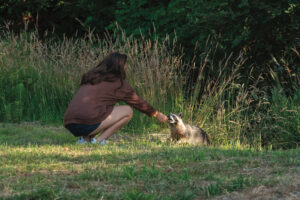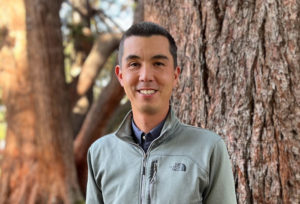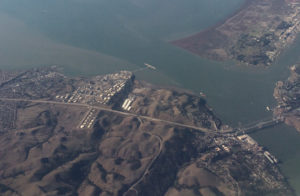It is time for the uncomfortable conversation. The summer’s protests have brought public attention to racism in America, including in outdoor and recreational activities. There have been hashtags on social media for #birdingwhileblack, #joggingwhileblack, #racedrivingwhileblack, #golfingwhileblack, and #hikingwhileblack. The hashtags have worked well to bring awareness to the challenges that Black people face while exercising their right to enjoy the outdoors, and serve as a great tool to share stories and frustrations. The time is now for parks, recreation, conservation, and outdoor enthusiasts to work together to change the landscape by adopting new policies and practices to make open space, conservation areas, and parks welcoming and inviting to people of color—Blacks in particular. By doing so, these agencies and organizations can play a vital role in racial and socio-economic equity.
Why is there a need to adopt new policies and practices that change the landscape? Because until White administrators accept the truth that people of color, Blacks in particular, have the right to open space, trails, and parkland, the hashtags will continue to increase, as well as the protest of frustration. Because Black lives are no longer front page news, does not mean the problems have been solved. There must be a shift in urban design, access to parks and hiring practices, and the elimination of racialized policies and the promotion from within the “good ole boy network.” Failure to recognize the value of changing the culture and creating an organization that is reflective of the community will only breed insidious and intentional behaviors in regards to ensuring that people of color, Blacks in particular, are not welcomed in nature. Greening communities for equity and sustainability starts inside and will eventually filter out.
On January 12, 2017 President Obama, just before he left office, set in motion a memorandum titled “Promoting Diversity and Inclusion in our National Parks, National Forest and Other Public Lands and Waters,” directed at the heads of executive departments and agencies. In that memo he clearly states that “promoting diversity and inclusion is not the sole responsibility of one office within a Federal agency, but a joint effort that requires engagement by senior leadership and the entire workforce.” But according to the 2019 Green 2.0 Transparency Report, a report with data collected from non-government organizations (NGOs) and foundations nationwide about the number of women and people of color that are full-time staff, senior staff, and or board members, there’s a long way to go.
The report offers data on the top 40 NGOs and funders over three years, showing an increase in the recruitment of people of color in self-reporting NGOs. However, that is nothing to celebrate, especially for Blacks in particular. Note that a few of these organizations are headquartered here in the Bay Area and/or have regional branch offices here. Truth be told some of the organizations are yours. If you are one of the few organizations that took heart in what President Obama put in motion-and have made headway changing the culture and removing the barriers, I say thank you. But if nothing has changed in your organization, you are continuing to perpetuate a system of institutional, structural and culture racism, thereby continuing to allow racialized policies to shape the future of your organization. Intentional or not the outcome results in disparities by race.
A racialized policy, for example, could be if I were seeking employment in your organization and the employee handbooks or part of the hiring practices contained a clause that non-citizens would be required to file a declaration of intent to become a citizen to be eligible for employment. I would have to think twice if that was an organization that I would want to work for, even when taking into consideration that I already possess all the requirements to work in the United States. Policies must change. When organizations are entrenched with the good ole boy culture and the recruitment for management positions is only available through in-house promotions, and training to become a senior level manager is only offered to a mid-management level employees within the organization, and none of the employees eligible are people of color Blacks in particular, that is structural and institutionalized racism.
A great start in changing the landscape and culture is to remove the barriers, starting with the elimination of in-house-only promotions and recruiting from a large selection of platforms including the environmental movement, urban parks, the National Forum of Black Administrators, and a commitment to research the best practices to recruit and retain people of color, Blacks in particular. Much of this work should begin, for a recruitment is necessary.
In a thorough search for the most recent study or breakdown of the Bay Area’s distribution of parkland and its use by people of color, Blacks in particular, I found that the data collectively does not exist, at least not among the top organizations, conservation, and open space agencies in the Bay Area. The lack of tracking by ethnicities provides another shield or an excuse to say, “We have no proof that people of color, Blacks in particular, are not accessing our parks.” In light of this, I would encourage organizations to work together to enhance the tracking systems you use to collect data on the number of people entering the parks. I understand that due to the 1996 Proposition 209, which prohibited all state agencies from using race, gender, or ethnicity as a means to document and track, there has been some reluctancy in collecting this data. However, if the needs of all people are going to be met, there has to be a mechanism in place that will collect the data. It is already being prepared by income, zip code, census, and for eligibility for other purposes … it can be and should be done by race/ethnicity.
As I write this article, I come from a place of love, passion, compassion, and truth. Moreover, from the belief that when you combine the power and the influence of parks, recreation, conservation, and preservation organizations, complemented by the environmental movement, you have the force, the drive, and ability to change the urban design and physical landscape of any given community. Changing the landscape will require stepping out of your comfort zone and inviting others to the table who have been doing the work, but who are seldom recognized by mainstream influential organizations. These voices include Carl C. Anthony, urban planner, environmentalist and author of The Earth, The City, and the Hidden Narrative of Race. His leadership is known locally and nationally and is an inspiration to those on the ground. The Women’s Earth Alliance (WEA) “catalyzes women-led, grassroots solutions to protect our environment and strengthen communities from the inside out.” And Ms. Margaret Gordon, “a force of nature” co-founder of the West Oakland Environmental Indicators Project, former Port of Oakland commissioner, and committed fighter for environmental justice.
The Bay Area is beautiful country land, surrounded by hills, water with many streets lined with trees with connectivity to trails and open space. Unfortunately, this is not the reality for everyone. The reality can be changed. It will require commitment to prioritize the access vulnerable communities and people of color have to green space and greenbelts in their backyards, streets lined with trees, and safe pedestrian pathways, and to provide spaces for families to breathe fresh air, unpolluted by systematic environmental injustices that are frequently found in these communities. This disconnect to nature is not new. More than twenty years ago professors Daniel Mazmanian and Michel Kraft wrote in Towards Sustainable Communities Transition and Transformations in Environmental Policy:
“There was a recent report analyzing access in the use of San Francisco Bay Area’s Open-Space — East Bay Regional Park District (EBRPD) — the most envied jewels of urban open space in California. [It] found that:
- Low income minority communities are predominantly located in East Bay “flat lands” whereas affluent communities are primarily located higher elevations on the hillsides, where most of the East Bay parks’ acreage is located.
- Parks tend to be visited by people who live close to them; since the hillsides tend to have the most expensive housing, the East Bay’s parks tend to get a few visits from low income minority visitors.
- Part of this inequity problem relates to the inadequate transit options. Many low-income minority residents do not own cars; parks tend to be poorly served by buses or light rail.
If we ever hope to “move from the urban landscapes of fear to geographies of hope” whereby access to open space is no longer a privilege but a right, then “ecological citizenship must go beyond the historic adherents (the hikey and bikey and tree hugging set) and move into the mainstream.”
Two decades later we are still talking about inadequate passage into parks. Correcting the redlining policies made decades ago are just now being addressed in various communities. For example: Brent Ainsworth, a Public Information Specialist for the County of Marin wrote in the California State Association of Counties February 26, 2020 edition:
“A lot of people would love to live in Marin, but most of the county is preserved. Consider federal and state park lands, water district land, county open space, and agricultural land trusts, and you end up with nearly 85 percent of Marin County as undeveloped and not zoned for subdivisions. Environmentally minded local government leaders made the commitment years ago to avoid sprawl and to preserve that beauty. Most of the county’s 260,000 residents live along the Highway 101 corridor on the eastern side of the county that borders San Francisco Bay.
Marin didn’t necessarily end up this way naturally. We can point to the practice of blatantly racist redlining that was common nationwide until passage of the Civil Rights Act of 1964. Government-endorsed redlining on maps prevented non-white people from securing loans, purchasing homes and building (ironically named) equity in certain neighborhoods, especially in coveted suburbia. 90 percent, and other small zones have highly concentrated populations of African Americans and Latinos – the result of redlining. The county is gradually working to level the playing field for all residents”.
Greening America’s vulnerable communities is a collective imperative, with roots deeply entrenched in American slavery. A definitive description of this is found in Phil Vischer’s video “Holy Post—Race in America”. This history is essential for forward motion and to ensure we do not repeat the mistakes of the past.
This inequity does not have to—nor should it—remain. You have the power to change the design, undo the wrongs, and invest in the future for these vulnerable communities across the Bay Area. However, before looking externally, again, I encourage you to look internally to the diversity of your organization at the top: has your organization welcomed people of color, Blacks in particular, in any capacity, whether it is within the senior leadership team or on your board?
I ask because, in a public gathering organized by the now defunct Bay Area Open Space Council in 2018 to address equity and climate change in the Bay Area, an audience member asked, “How can we attract more people of color to our trails and parks?” The panel of all white males over the age of 50 seemed excited about the question, and one of them stood up proudly and said, “If you have one, get at least one more.” “Get one more” was referring to people of color. All of the responses that followed were insensitive and offensive. Not one panelist spoke about the value of having a person of color on his team. The next question that should have been asked is, “Why do you have a person of color on your board or on your team? Is the intent to check the box and proceed to marginalize and silence that voice? Or are you committed to listening with an open mind, with the willingness to change your perspectives?”
In my attempts with my White colleagues to discuss the disparities and question the motives, the conversation becomes difficult … The response is either to give an excuse or to justify the difference. It took me years to understand what the disconnect was. This year, while reading White Fragility by Robin DiAngelo, I got a better understanding. She states:
“One of the greatest social fears for a white person is being told that something that we have said or done is racially problematic. Yet when someone lets us know that we have just done such a thing, rather than respond with gratitude and relief (after all, now that we are informed, we won’t do it again), we often respond with anger and denial. Such moments can be experienced as something valuable, even if temporarily painful, only after we accept that racism is unavoidable and that it is impossible to completely escape having developed problematic racial assumptions and behaviors.”
I will remain unapologetic for my questioning, my fight and commitment to greening the most vulnerable parts of our communities and in the hiring of people of color, Blacks in particular. I remain hopeful that change will come where there truly will be access for all, especially for the most vulnerable parts of our community — in their very own backyards and neighborhoods. If I can walk out of my door and be on a trail, in a park or enjoying open space within a five-minute walk, so should every resident of any given community. If open space, conservation, and preservation organizations don’t step up, grassroots organizations will step in and find a way out of no way — such as “Better Neighborhoods, Same Neighborhoods.” The nonprofit has been awarded $28.2 million for housing, connecting the San Leandro Creek Urban Greenways with a 1.2-mile trail to the Martin Luther King Jr, Shoreline Park, and to plant over 2,000 trees. We are tired of waiting for the broken promises to become a reality. This will be a model for the future.
If the profession of parks, recreation, conservation, and preservation is going to be sustainable, it will require organizations to be in touch with and connected to the realities of the changing demographics and the expectations of the community. Failure to invest now will threaten your bonds, your measures, your growth, and our LAND, simply because Blacks and other people of color were not invited to the table to enjoy the spaces that you wholeheartedly want to protect and the land that belongs to everyone. Your silence is an active affirmation of the status quo, which serves to perpetuate the inequities.
While I applaud the recent resolutions, testimonies, and statements recognizing Black Lives Matter and condemning the racial attacks on Asians as a result of COVID-19, we find ourselves here because for years nothing has changed. Michael Brune, the executive director of the Sierra Club, wrote in 2014 an article “Why We Can’t Be Silent.” He was responding to the deaths of Michael Brown, Trayvon Martin, Eric Garner, and the killing of Tamir Rice. Let me remind you Rice was 12 years old playing at a park — nothing has changed in your privileged world. Six years later, 2020, we are protesting for justice for Oscar Grant, Ahmaud Arbery, Breanna Taylor, Freddie Gray, Philando Castile, Sandra Brand, George Floyd and countless others who have lost their life or have had their life threaten for being Black. It is a simple task: let us Unite as One to Greening Communities for Equity and Sustainability: Inside and Out.





